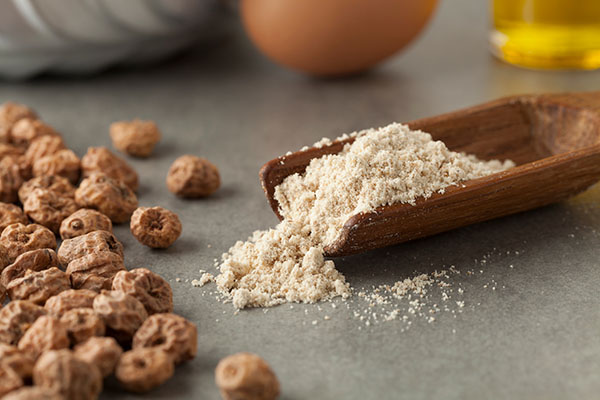
Advertisement
The holidays can be tough for vegans, especially if the rest of your family loves to eat meat-based dishes.
If you’re vegan or have family and friends who are trying to cut down on their meat intake, prepare hearty quinoa-stuffed acorn squash. This vegan dish will impress even the most demanding meat eater!
4 Reasons to enjoy more acorn squash
Acorn squash is a type of winter squash that belongs to the Cucurbitaceae or gourd family, which also includes butternut squash and pumpkin.
This superfood is shaped like an acorn, with ridged skin that varies in color from dark green to white. The most commonly grown varieties of acorn squash are dark green, with a patch of bright orange near the top.
Acorn squash is sweet, with yellow-orange flesh that tastes slightly nutty. While it’s botanically classified as a fruit, acorn squash is considered a starchy vegetable. This superfood can be used as an alternative to other high-carb vegetables like butternut squash, potatoes or sweet potatoes.
Acorn squash is full of vitamin C, a water-soluble essential nutrient that boosts immune health by supporting the function of immune cells. Vitamin C also helps fight against potentially harmful microbes.
Acorn squash is chock-full of B vitamins that play a role in red blood cell production and metabolism. It also contains the electrolytes magnesium and potassium, which are needed for muscle function and blood pressure regulation.
Acorn squash is a good source of dietary fiber that promotes healthy digestion.
Still not convinced? Here are four reasons to add more acorn squash to your regular diet:
Acorn squash is a nutrient-rich superfood
Acorn squash is an amazing superfood that’s full of various vitamins and minerals that promote your overall well-being.
The bright orange flesh of acorn squash is full of essential nutrients, such as:
- B vitamins
- Iron
- Magnesium
- Manganese
- Provitamin A
- Vitamin C
Foods like white pasta and white rice contain refined carbs. In contrast, acorn squash is rich in dietary fiber that helps regulate blood sugar levels, slows digestion and makes you feel full for longer.
Acorn squash contains beneficial antioxidants
Acorn squash is full of antioxidants or compounds that help protect against cellular damage. Studies suggest that following a diet rich in antioxidants can help reduce your risk of developing chronic conditions like heart disease and certain kinds of cancer.
Acorn squash is a good source of carotenoids. These plant pigments have powerful antioxidant effects. Winter squash is only second to carrots as the richest source of the carotenoid alpha-carotene.
Diets rich in carotenoids that can be found in acorn squash, like alpha-carotene, beta carotene and zeaxanthin, can help prevent eye-related disorders, lung cancer, mental decline and Type 2 diabetes.
Acorn squash is good for your digestive health
Acorn squash is rich in soluble and insoluble fiber. These two types of fiber have different functions, but they both have important roles when it comes to digestive health.
Insoluble fiber adds bulk to your stools while soluble fiber softens them. The latter can prevent constipation and support regular bowel movements.
Both types of fiber aid probiotics, or the “good” bacteria in your gut. You need to a have healthy gut microbiota because it helps boost your immune system and prevents disease.
Studies also suggest that following diets rich in high-fiber fruits and vegetables like acorn squash can help prevent irritable bowel syndrome (IBS), constipation and even colorectal cancer.
Acorn squash can help prevent certain diseases
Adding acorn squash and other vegetables to your diet can help improve your overall health since increasing your vegetable intake is key to reducing your risk of various chronic diseases.
Studies have shown that vegetable-rich diets help lower risk factors for heart disease like high blood pressure and high LDL (bad) cholesterol levels. A diet full of veggies can also help prevent atherosclerosis, or the buildup of plaque in the arteries that increases heart attack and stroke risk!
Research suggests that people who eat more vegetables usually weigh less than those who consume fewer vegetables. Having normal weight is important because being overweight or obese increases your risk of many health problems like diabetes, heart disease and certain types of cancer.
Quinoa-stuffed acorn squash
This recipe for roasted and quinoa-stuffed acorn squash is from Kirsten Kaminski’s “Vegan Holiday Cookbook.”
This dish pairs nutritious acorn squash with a filling quinoa stuffing. Full of sweet and hearty flavors, this dish also includes pomegranate seed topping that gives the dish a fresh, tangy twist.
If you’re using whole pomegranates, try this trick to easily remove the seeds. First, slice the pomegranate into four pieces and place them in a big bowl with water. Next, separate the seeds from the skin while the fruit is submerged in the water.
The seeds will sink to the bottom while the skin will float to the top, saving you a bit of prep time.
Ingredients for 4 servings:
- 1 cup (240 ml) of vegetable broth
- 1/2 cup (85 g) of uncooked quinoa
- 1/3 cup (65 g) of fresh pomegranate seeds
- 1/3 cup (40 g) of pecans, finely chopped
- 4 medium acorn squash
- 2 tablespoons (30 ml) of olive oil
- 2 tablespoons (30 ml) of pure maple syrup, divided into two
- 1 tablespoon (3 g) of fresh thyme leaves
- 1 tablespoon (15 ml) of soy sauce
- 1 teaspoon of olive oil
- 1/2 teaspoon of ground cinnamon
- 1 medium red onion, diced
- 1/2 medium red apple, diced
- 4 cremini or white button mushrooms, diced
- A pinch of salt
Preparation:
- Preheat the oven to 350 F (175 C) and line a medium baking sheet with parchment paper. Cut off the top of each acorn squash. Cut a thin slice from the bottom of the squash so it can stand on its own.
- Remove the seeds and some of the squash flesh to make a bowl, but don’t scoop out too much on the bottom side.
- Make the glaze by mixing one teaspoon of olive oil and half of the maple syrup in a small bowl. Brush each squash evenly with the glaze. Place the squash on the prepared baking sheet, then roast for 30 minutes.
- To make the stuffing, cook the quinoa in the broth according to the quinoa package’s instructions.
- Get a large nonstick skillet and heat two tablespoons of olive oil over medium heat. Add the onion, apple, pecans and the rest of the maple syrup. Cook the mixture for three to four minutes or until the apple is soft and the onion turns golden brown.
- Add the mushrooms, soy sauce, cinnamon, thyme and salt to the stuffing and cook for five to 10 minutes. When the quinoa is done, add it to the pan and cook everything for three to five minutes or until the flavors have combined.
- Remove the squash from the oven and fill each squash with the quinoa stuffing. Return the squash to the oven and roast for 10 minutes.
- When the squash is done, divide the pomegranate seeds among them before serving.
Prepare scrumptious quinoa-stuffed acorn squash for dinner to boost your fiber intake!
Sources:
Advertisements







